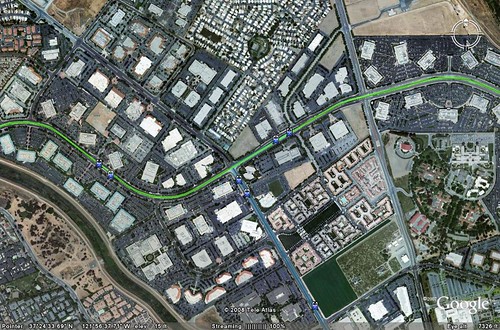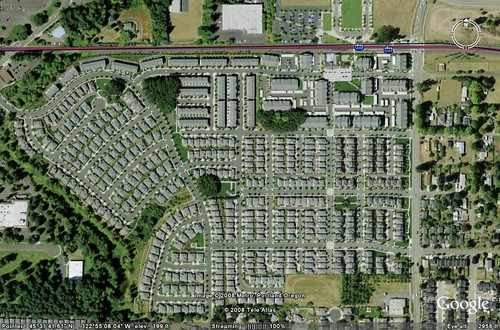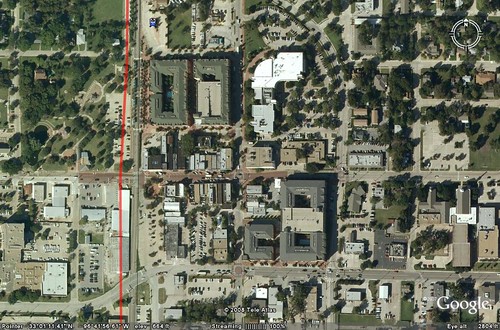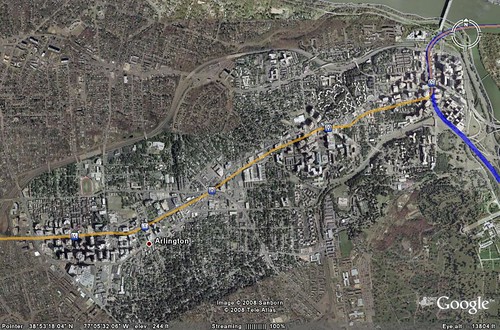1. LRT(Tram) Patronage in Europe has been increasing while bus ridership falls.
This is interesting to me because unlike the United States, Europe has kept a good amount of its tram systems. In many large cities, they are still networked to go a lot of places.
According to Jeff, in Europe, over a period of 10 years, Light Rail Transit (LRT) patronage rose 20.3% while bus patronage fell 5.6%. His implication is that people, the masses, simply and unequivocally prefer rail over bus. And surprisingly, it’s actually what are commonly considered the disadvantages of rail that turn out to be it’s advantages over bus transit in encouraging use. The high cost and inflexibility of rail creates a permanence that people prefer over the impermanent and unreliable nature of bus transit.2. Rail Focuses Development, Buses Follow it
Another polished gem Jeff provided us with was the idea that rail systems “focus” a city and development while bus systems simply “follow” development. So buses, because of their impermanence and reliance on auto roads, must heed to the “predict and provide” game and attempt to follow wherever development may randomly occur. Rail on the other hand spurs and centralizes development, creating a sense of permanence not found in no rail cities. Rail and streets renaissances go hand in hand.I've said this a few times before. Rail has the power if harnessed to focus development unlike buses that just respond to it. But it's not going to just happen. There need to be plans and policies in place to do it right. In the comments below Fred's post, a discussion started on San Jose. This is the perfect example of just saying that light rail is going to do all the work. I posted a while ago on employment sprawl. Well here again is an aerial of San Jose's system by all the tech jobs, something to not emulate.

Here is the Pearl District, which used to be a rail yard and was helped by the plans and policies of the PDC and the streetcar

Update: ABC in the comments asked that we use a more suburban area to show what's possible instead of an urban area. In the situation like San Jose above with 3 -5 story office buildings I think it's perfectly ok to expect a street grid like the Pearl Districts, there was a thought that it was the Pearl was predestined to turn out that way. Before the development agreement it was supposed to be tops 15 units an acre and the developer had thought about doing townhomes. Here is what it looked like in 1996.
 But as suburban examples go, here is another from Portland with single family homes in a grid South of Orenco Station.
But as suburban examples go, here is another from Portland with single family homes in a grid South of Orenco Station.
Downtown Plano trying to reintroduce Urbanism

And a Heavy Rail Subway example, Rosslyn Ballston on the Metro Orange Line. I've discussed this before but this used to be a strip suburban corridor. These things take time, this has been over 30 years.


6 comments:
I think another important lesson is that it's very difficult to make an entirely bus-based transit system that is both useful and cost-effective. In any city, there are going to be a few core routes that have several times the ridership of the average route. If your bus system is popular enough to allow for reasonably frequent service on the peripheral routes, then the core routes are going to be overloaded. If your bus system isn't popular enough to overload the core routes, then the peripheral routes are almost certainly not going to attract enough ridership to warrant frequent service, or even any service at all. To truly scale up your system, you need rail of some kind, but of course it isn't much use without an extensive bus network to connect to it as well.
I'm a light rail supporter, but I'm afraid I have to disagree with your example. If you want to put up an example of how light rail and planning must go together, you chose rather poorly with the Pearl District.
First, the Pearl District was based around a streetcar, not light rail. Yes, the two modes are both rail based and powered by overhead electrical wire. They are also significantly different enough in function and purpose that you can't simply substitute one for another.
Second, the Pearl District exists within the downtown region of Portland. While it was formerly industrial, it was also platted out in the second half of the 19th century using the same grid system as downtown, the ubiquitous "short" 200 foot Portland blocks. It already had an urban character to it. It would have been impossible to place a suburban style development -- like the one shown in the San Jose aerial -- in this space. It just wouldn't have fit. (The old Hoyt Street yard was only 400' wide and already had buildings in portions of it.) It also would have been a poor business development.
To put it another way, the nature of the type of development that went into the Pearl had a lot more to do with geography and economics than planning -- unless were talking the planners of the 19th century, and those guys weren't particularly altruistic.
I want to agree with your point but you need to find an example of a planned light rail development that wasn't urban when it was planned, someplace that *could* become a suburban style sprawl and did not, due to planning. And the Pearl District is not that example.
I see your point on tech. Yes Streetcars in this instance and light rail have different operating structures. However I don't see why you can't do this kind of urban fabric near a light rail station. The Hoyt Street yards if you remember had no street grid so they had to be reintroduced. The land was also zoned at a maximum of 15 units per acre before the development agreement. There very well could have been townhomes build there. Why couldn't a fine grain grid like that be introduced around light rail? Sure there is only one stop instead of many, but this is the problem with our planning. We think there should be a difference between suburban and urban planning. These are three story buildings in San Jose planned just a few miles from downtown, there is no excuse for them not reintroducing the grid and building streets instead of huge parking lots.
One point of correction: I wasn't arguing you *couldn't* introduce a more urban form to other areas, only that I felt there are other better arguments than the Pearl to be made for it. Plano, for example, appears at first glance to be far closer to the ideal you advocate, although perhaps on the small side.
The Orenco example isn't too bad either, though perhaps its not quite far enough; large portions feel quite suburban in person. Nearby projects on the impending WES commuter line are proposing different open space requirements to prevent such a suburban feel and suburban density. Ironically one of these projects is seeking to turn a suburban business campus into an "urban village".
Orenco also warrants more study since it was neither purely publicly driven nor purely privately driven -- if memory serves it was the only greenfield URD in Oregon when formed. In short it was a public-private partnership. Engaging developers is as critical as planning processes go, and half the battle is convincing them that this style of design is better for their bottom line (which it is) as well as the community.
I guess the problem is that we just don't have as many good examples as we should. It's not easy for a lot of these lines that were built in the 80s and 90s without development regulations or master plans. A lot of it was just developers building suburbia around the station. Today we know so much more that it would really be criminal to allow what happened in San Jose to happen again. I guess that is the point I was trying to make. Thanks for the comments ABC.
ditto what abc said.
The Pearl really just proves one thing. That open markets and a reduction of taxes, tariffs, and Government regulation increases the ability for financial investment to be made into development.
The Pearl hasn't contributed to the Portland bottom line barely at all, it barely covers the maintenance cost to the city. But when the tax abatements do run out I'm betting on about 5-10% of the condos and such going on market.
It is an example where planning really didn't do anything.
Orenco is another tough sell in my book. It is a nice development, but the "town center" isn't even near the light rail station. It is instead out by the HUGE 4 lane w/ 1 turn lane main road. The vast majority of development in that area has actually developed around the road and not the light rail station.
In another area though the density is increasing drastically at the 205th stop and the 185th stop, both of which are good examples but not entirely. The fact is, the MAX is a definite advantage to selling Portland, and helps overall but the whole planning aspect of the process has been what one could only logically dub a failure.
The densities are slowly increasing, as we know it takes time, but the planning failed and the natural order of demand from the consumer base is what is actually allowing the densities along the line to increase.
It could be said that without the original planning that might not be possible, but it could also probably be said that it would have spawned more density if the zoning was done, taxes where removed from the land, and a natural order of the market could have worked.
Matter of fact I'd bet on it, every major city in the United States was built that way.
...anyway, I gotta quit commenting on your blog and get back to writing up more about HR 1650 as I promised ya! :)
Post a Comment